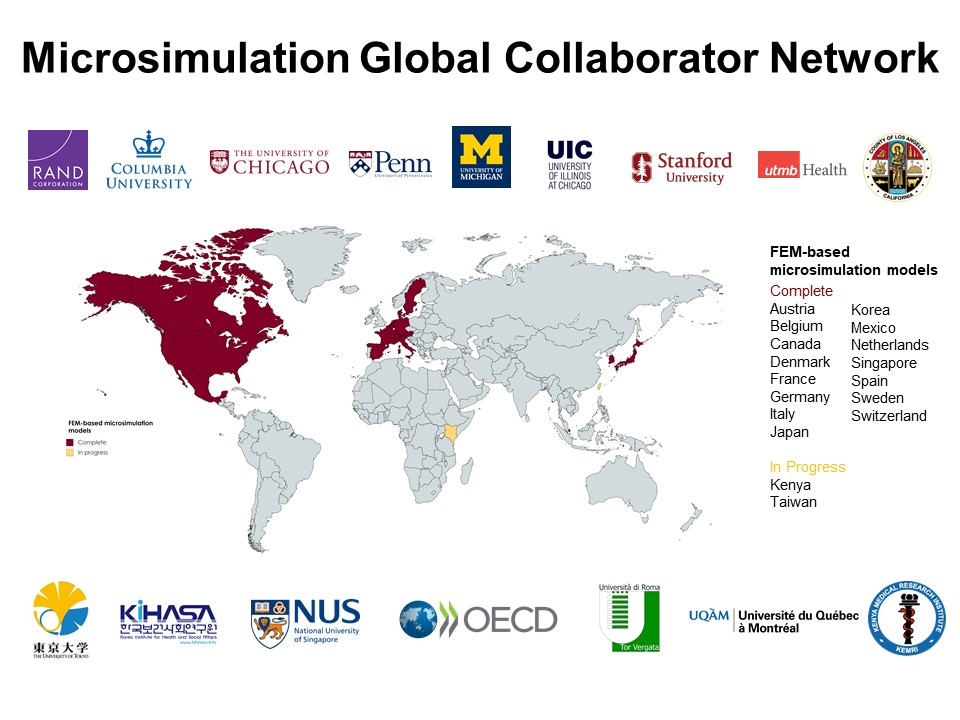The USC Schaeffer Center’s microsimulation models have set the highest standards for researchers to effectively model future trends in health and longevity. These sophisticated models provide invaluable tools to demonstrate how demographic, behavioral and policy changes might influence decision-making and outcomes.
The pioneering Future Elderly Model (FEM) models trends in health, functional status, health spending, pharmaceutical innovation, labor supply and earnings for individuals over age 50 in the U.S. FEM has grown in reach and effectiveness from its inception in 1997 to today, assisted by funding support over the years from the Centers for Medicare & Medicaid Services, the National Institutes of Health, Pfizer and the U.S. Department of Labor. In addition, the microsimulation team has created a global network of collaborators who are building out country-level FEM-based models in 17 countries. A PDF about the project is available here.
An extension of FEM, the Future Adult Model (FAM), models similar functions for individuals ages 25 to 50.
Future Elderly Model (FEM)
What does the health status and demographics of the future Medicare beneficiary look like? How will changes in life expectancy affect our public programs? With our growing elderly population, will spending on healthcare exponentially increase? What is the potential value of innovative new cures?
Using the Future Elderly Model (FEM), researchers can address these questions and many more, exploring changing demographics to predict the future health status of populations as they age — and the resulting consequences for society.
An economic-demographic microsimulation, FEM helps scholars make projections that inform research and policy across the public and private sectors, nationally and internationally.
FEM is the flagship project of the Schaeffer Center’s USC Roybal Center for Health Policy Simulation, which continues to develop FEM in partnership with Columbia University, Harvard University, Stanford University, RAND Corporation, the University of Michigan and the University of Pennsylvania.
Using FEM, USC researchers have published dozens of peer-reviewed publications and produced results utilized by government agencies, the White House, Congress and private organizations interested in aging policy. Learn more.
Future Adult Model (FAM)
The Future Adult Model (FAM) is an economic-demographic microsimulation that extends the USC Schaeffer Center’s Future Elderly Model (FEM) to the entire adult population in the United States.
FAM utilizes:
- A transition model of health, education, family and work, and earnings
- An initial conditions model supplying FAM with new cohorts that enter the model’s relevant ages
- A policy outcomes module that aggregates outcomes into health and cost measures such as taxes, medical costs by payer, quality-adjusted life-years and life expectancies
One significant project using FAM is an analysis of early childhood determinants of health in old age. Researchers are simulating the control and treated cohorts from a well-known early childhood intervention, the Carolina Abecedarian project (ABC). Learn more.

You must be logged in to post a comment.